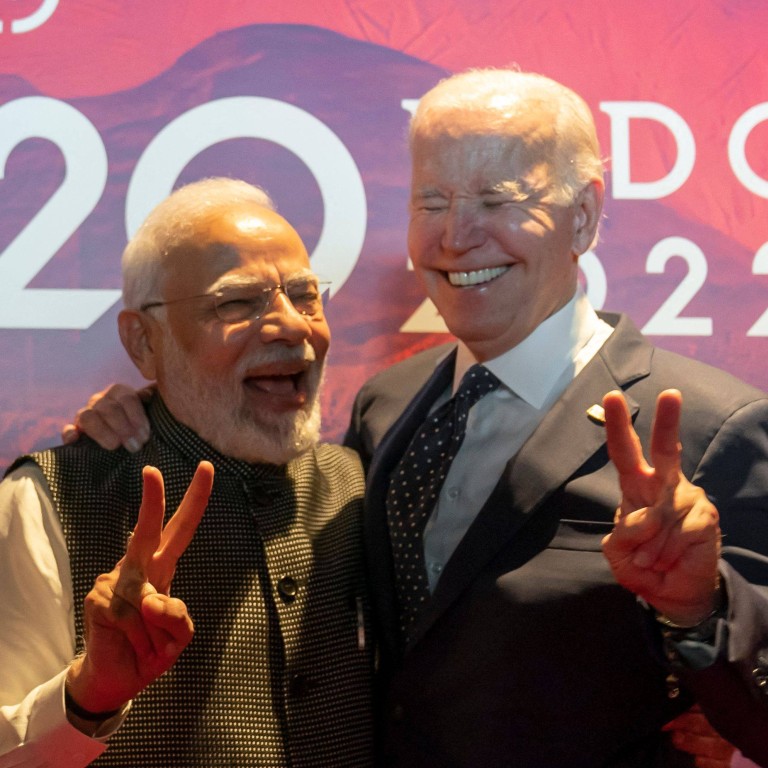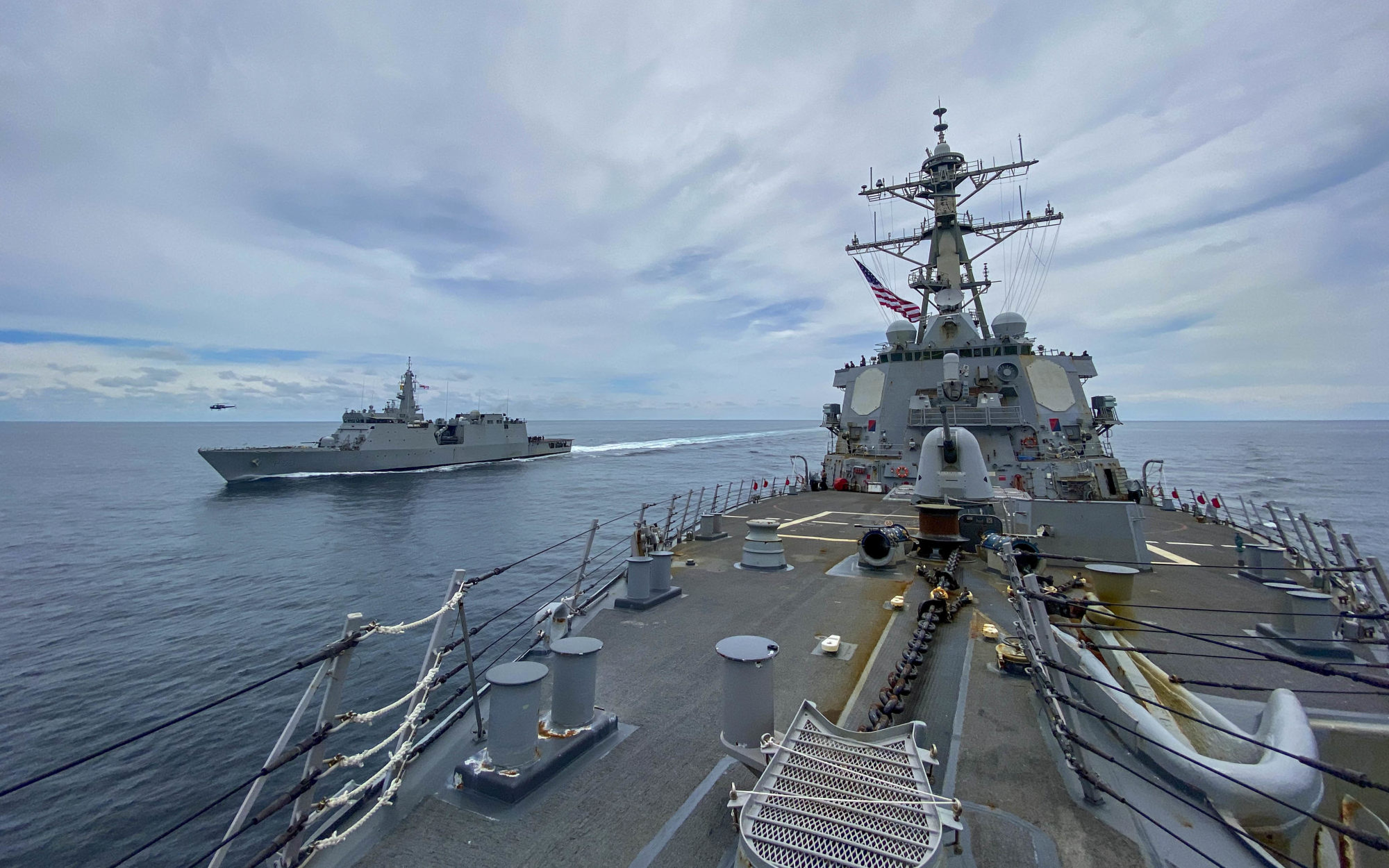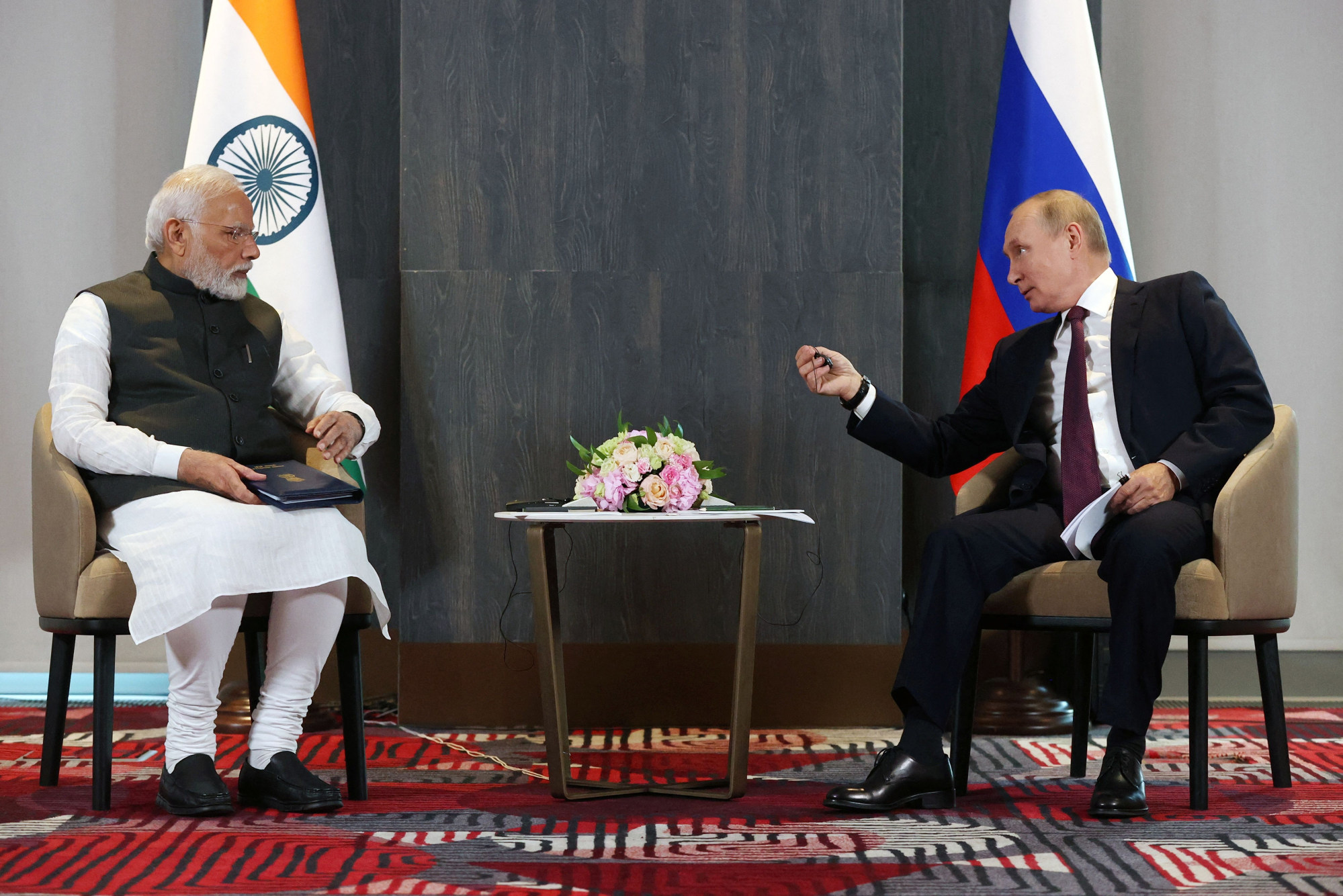
India should wean itself off Russian influence and claim its rightful place in US camp
- Amid rising global tensions, India should abandon its stance of perceived neutrality and formally acknowledge its foreign policy tilt towards the US
- But first, New Delhi and Washington must address the kinks in their relationship, in defence, trade and other areas
As the war intensifies, the ramifications will be felt by all – including India, the G20 chair this year, as it continues to walk a diplomatic tightrope between Russia and the United States.
However, if India wishes to be a responsible stakeholder within the international community and not a hesitant fence-sitter, it should slowly extricate itself from Russian influence and play a nuanced role in the resolution of the crisis, while formally acknowledging its foreign policy tilt towards the US.
This shift can, however, only take place once the contradictions that mark the India-US relationship are addressed, so that New Delhi can eschew its perceived neutrality on the war and chart a new foreign policy course.
For its part, India reciprocated by remaining ambivalent on the Hungarian Revolution (1956), the Prague Spring (1968), the Afghan invasion (1989) and Crimea (2014), and has traditionally abstained from voting against Russia in global forums like the UN.
However, external factors such as the end of the Cold War and China’s rise, and internal factors such as the liberalisation of the Indian economy and the resolution of the Kargil conflict with US help opened an avenue for India-US rapprochement.
Subsequently, the signing of the US-India civil nuclear agreement in 2005, followed by the Nuclear Suppliers Group (NSG) waiver to India in 2008 brokered by the US, in addition to the signing of major defence agreements, firmly put India in the US camp.
This structural tilt towards the US came as Russia began building ties with China and Pakistan.
While India is bandwagoning behind the United States, its perceived neutrality in the Russia-Ukraine war – viewed in terms of India’s abstinence during key votes at the UN and its hesitation to directly mediate in the ongoing crisis – demonstrates the limitations of the India-US relationship.
On issues of both traditional and non-traditional security, inherent contradictions that mark India-US relations have come to light. For example, New Delhi’s “goldilocks dilemma” in the Indian Ocean has alarmed its policymakers. While a sustained US maritime presence is viewed as a counteroffensive against Chinese machinations in South Asia, observers have noted that a sustained US presence could limit Indian influence in its traditional backyard.

Similarly, limited US technology transfers and arms sales have prompted India to procure defence equipment from Russia. Although India is producing its own weapons systems in a bid to become self-reliant, it continues to be the world’s leading arms importer.
These issues have shaped India’s understanding of its US relations and restricted an overt embrace of the United States in favour of Russia, which is seen as a reliable ally.
Indians see China as No 1 military threat, US as No 2: survey
For greater convergence on issues of global importance like the Ukraine crisis, India and the US will have to adopt a multipronged approach. First, they need to address their own mutual issues to build greater confidence and present a united front on multilateral forums.
If Washington wants India to prioritise the relationship, it will have to resolve existing concerns. For starters, the US should provide weapons to India to wean it away from Russia.

Similarly, it should eschew the use of “carrot and stick diplomacy”. Russian support for India on global platforms has been relatively unconditional whereas US support has come with riders – for example, India had to vote against Iran, an ally, at the International Atomic Energy Agency (IAEA) in 2005 and 2009 to comply with US wishes.
At the same time, India could improve ties with the US by limiting its defence purchases from Russia and looking for other potential arms exporters to fulfil its needs. On non-traditional security issues, quicker approval of visas for Indian citizens could pave the way for better people-to-people relations. Finally, India could open its dairy sector to American producers, a long-standing US demand.
In the end, a consolidation of bilateral issues would lead to a greater convergence on multilateral forums for both nations and would enable India to stand shoulder to shoulder with the US for the resolution of international disputes.
Anuttama Banerji is a political analyst based in New Delhi, India. She is the South Asia visiting fellow at the Stimson Centre in the United States and completed her master’s degree in international relations from the London School of Economics and Political Science (LSE) in 2018

.jpeg?itok=ljgLIoOz&v=1680741984)
